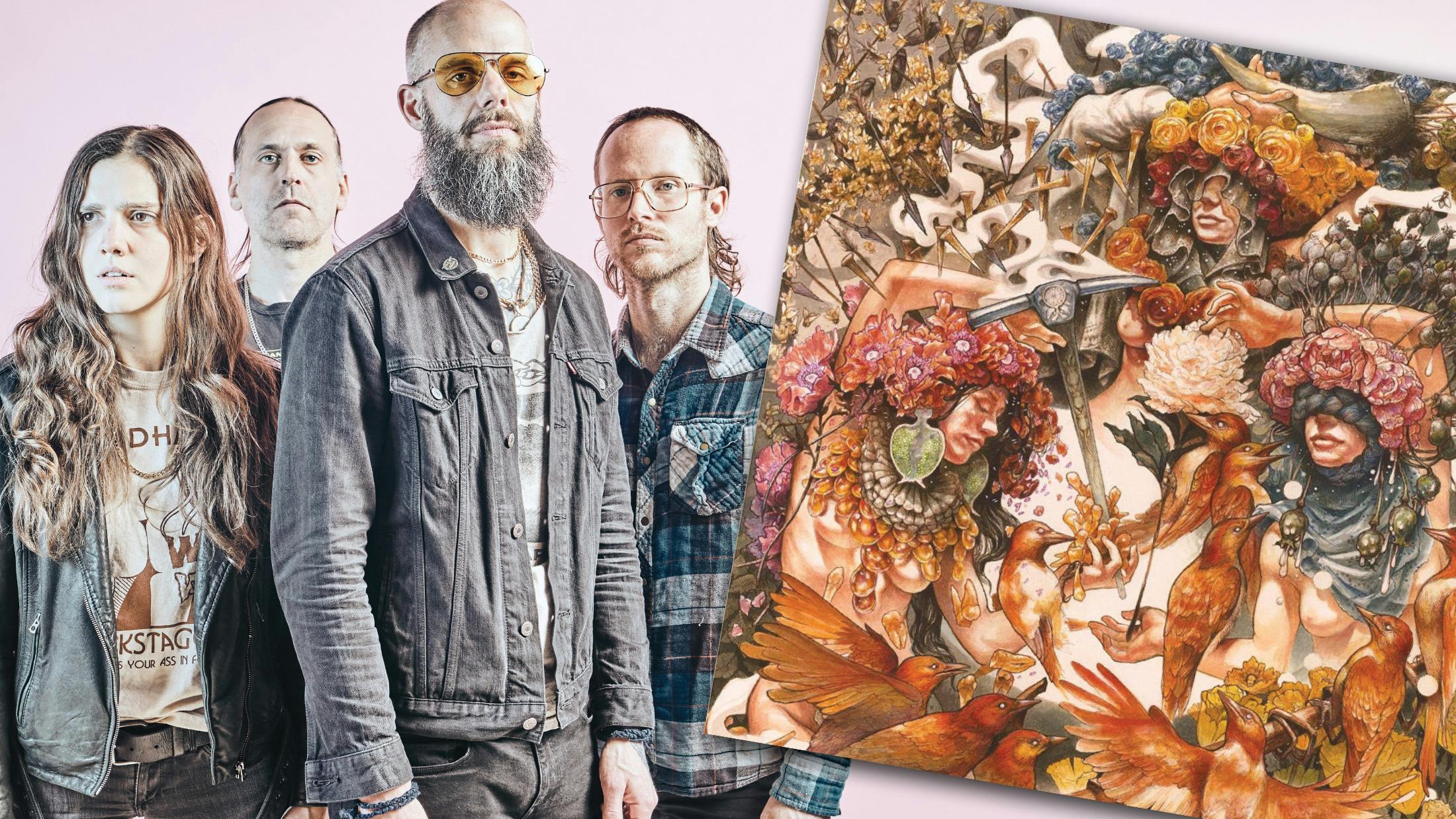Having exhausted every other colour on the traditional artist’s palette – Red, Blue, Purple, Yellow & Green – John felt compelled to deliver Baroness’ ‘orange album’. Refracted through the last few years’ shattered experience, however, he instead stumbled onto the chromatic concept of gold and grey. “This album feels like a turning of the page,” he reflected, having reached the end of the rainbow just as he sought to capture life’s great and small vagaries. “That title is a way of me saying that this album falls in between this precious, shining, eye-catching, valuable thing, and this dull, drab, melancholic thing. Life isn’t gold, nor is it grey, nor is it black, nor is it white. It’s this in-between – a mixture of it all.”
Stepping once again into producer Dave Fridmann’s Tarbox Road studios, the idea was to unleash the full brilliance of Baroness in 2019. In the wake of Yellow & Green, had fate not so cruelly intervened, the plan was to push at the horizons. With drama subsided and line-up consolidated, it was finally time to do just that. “Boredom and repetition are the death of art, as far as I’m concerned,” said John. “We needed to do something we hadn’t done before. I needed to do something I hadn’t heard before.”
READ THIS: The 50 best albums from 2009
Even with those high-concept, higher-minded ambitions, Baroness’ most ardent devotees couldn’t have predicted what would follow. A staggeringly strange, shapeshifting puzzle-box of an LP overflowing with hidden melodies, recurrent motifs and sly mirror imagery, from concept to composition to John’s predictably dazzling artwork, Gold & Grey proved to be by some distance their most intellectually stimulating work to date. More than that, it is Baroness’ most emotionally powerful release, steeped in anguish and honesty, full of craftsmanship but with zero artifice.
At points, the clash of virtuoso musicianship and soulful weight is dizzying. At others, the sound is stripped so far back you feel chills running down your spine. There are tantalising questions and there are gut wrenching answers. Even six months down the line, its songs are still revealing their secrets. We’d wager that six years hence, there will still be mysteries to be solved.
